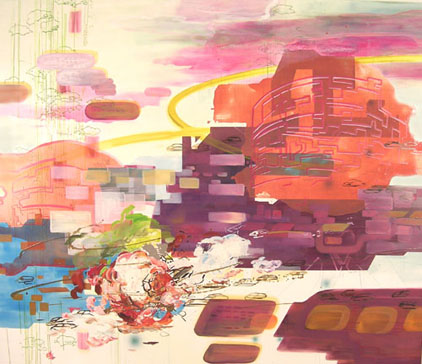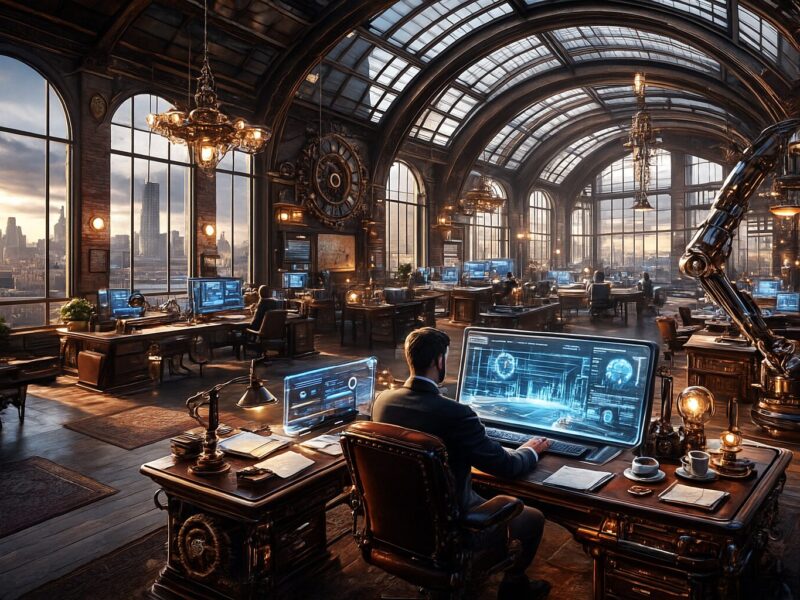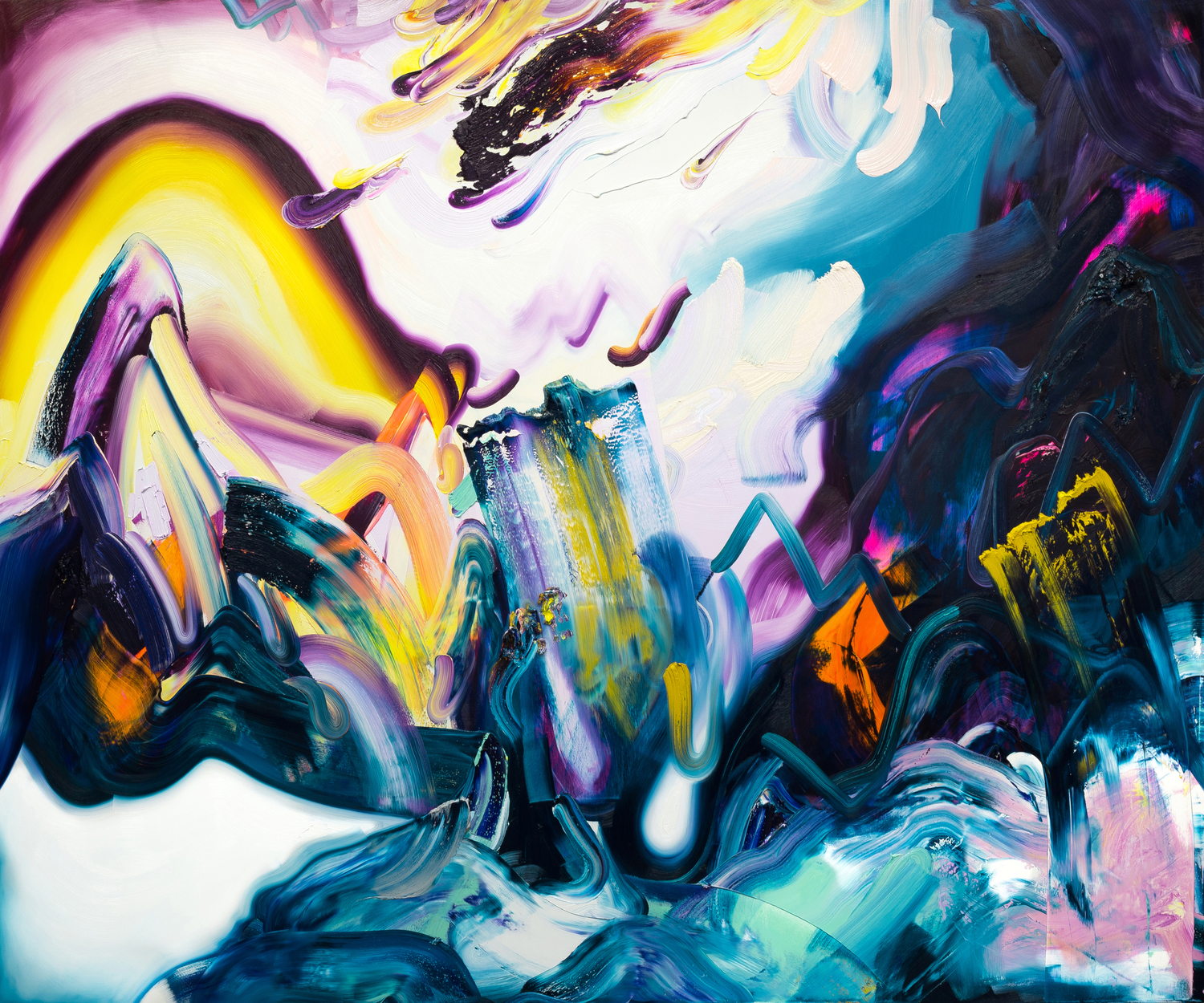By Randy Gladman
In her second solo exhibition, Kristine Moran sharpens the focus in her sci-fi paintings, zeroing in on the ideas of utopian theorists from the 20th century—Jane Jacobs, Robert Moses, Constant Nieuwenhuys and Buckminster Fuller—to present inner-city landscapes from an imagined alternative present. While still sprinkled with her signature airborne vehicles and extravagant explosions, these works ponder idealistic urban environments and the social interactions of their inhabitants. Like all science-fiction tales about supposedly perfect societies (think of Spielberg’s blindingly bright future in Minority Report), Moran’s narratives inevitably present harsh dystopias.
The geodesic dome serves as a motif in the exhibition, providing perfect shelter for the chosen few and symbolizing the ultimate failure of the utopian ideal to encompass those left outside its walls. In Blind Sided, the dome is seen from a top-down, aerial view, the same godlike perspective that the original designers of these idealized cities held when drawing up their blueprints. While those designers saw only plans for a perfect future, we see the chaos that now dominates the fictional metropolitan communities, not lucky enough to be included under the utopic domes. In Next In Line, perhaps the strongest work in the exhibition, we witness a military helicopter patrolling over a tangle of traffic-snarled multi-lane freeways. As its searchlights scan the ground, we are left with the distinct feeling that some kind of tragedy has struck the city. The image is reminiscent of the weeks after 9/11, when military choppers and fighter jets patrolled the skies above Manhattan. The vertigo-inspiring aerial perspective and sickly green-blue Matrix-like hue of these top-down works leave viewers with a clear sense of impending doom or fresh disaster.
Moran’s representations of buildings and vehicles are frequently wonky and skewed, their angles and flatness childlike in their clumsy, sketchy quality. The manner in which the artist delineates three-dimensional space in these complex landscapes is awkward and sometimes confusing. But it is exactly this looseness that makes her works so interesting. Combining glossy enamels and alkyds on board with a thick impasto handling of high-keyed paint, the artist captures the intense energy and action depicted in her narratives. The harried, improvised quality of her work injects the pieces with an intelligent and vibrant freshness.
By Randy Gladman. Originally published in Canadian Art, Vol. 22, No. 3, Fall 2005.


